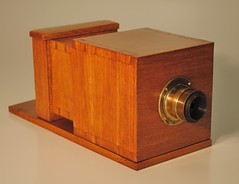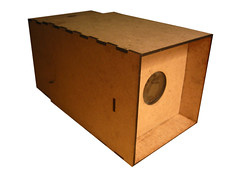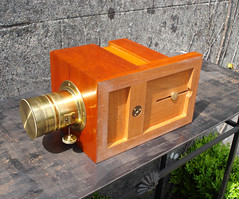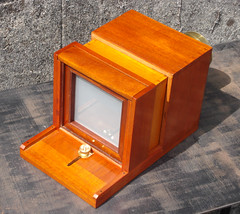Sliding box camera

|
| Le Daguerreotype (reproduction), famous French sliding box camera image by AWCam (Image rights) |

|
| English sliding box camera used for daguerreotype and wet-collodion exposures image by Michael Cleveland (Image rights) |

|
| American (?) sliding box camera image by Keith Jenkins (Image rights) |

|
| homemade sliding box camera image by Brian Purcell (Image rights) |

|
| simple camera obscura image by Paul Analog (Image rights) |
The sliding box camera was the first important type of large format camera. When the French Government bought the rights on the new Daguerreotype process in 1839 to give it to the world for granted Louis Jacques Mandé Daguerre, the inventor of that first announced viable photographic process, had designed Le Daguerreotype, a box camera which became a model for many early cameras. This camera type was also used for the concurrent calotype process and others. Even in the early years of the Wet-collodion process the sliding box cameras were in use. But the principle of this kind of view camera is older: Camera obscuras with sliding box focusing were already popular as a landscape drawing aid before the days of photography.
The cameras were consisting of an outer wooden box, with one open side and the lens board as the opposite side, and an inner wooden box with two open sides, opposite to each other, one open side with facilities to mount a focusing screen or a plate holder. When the focusing screen was attached the inner box could be shifted forward and backward inside the outer box for ground glass focusing. When a sharp image was visible the lens cap was put upon the lens and the screen was replaced by a loaded plate holder to make an exposure. The lens cap was used as shutter.

|

|

|

|
|
new daguerreotype camera | |||